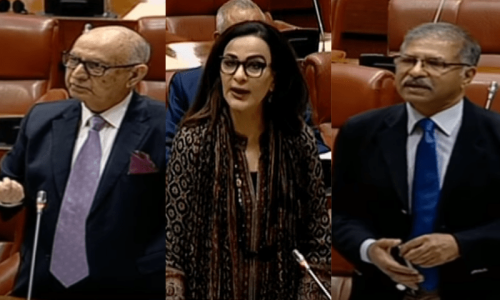PAKISTAN’S microfinance sector faces a looming crisis unlike anything it has experienced before. The Covid-19 pandemic threatens the livelihoods of microenterprises, critical sources of income for poor households in low-income communities. It has also created unprecedented challenges for financial institutions that serve them.
Pakistan’s microfinance sector serves 7.3 million low-income households that live close to the poverty line. Nearly half of these borrowers are women, with low access to formal finance. A failure to help the microfinance sector survive Covid-19 would cut off millions of Pakistan’s poor from capital and access to other formal financial services at the moment they need them most. Without decisive action from regulators, investors, and other private and public actors, microfinance institutions could be irreparably damaged.
Recently, the WHO urged Pakistan to reinstate lockdowns as a way to control the accelerating spread of the virus. In the wake of nationwide lockdowns, the concerns of microfinance borrowers turn to keeping food on the table. Early data indicate that borrowers will struggle to meet existing debt payments as a result.
In a paper published last month in the Oxford Review of Economic Policy, we conducted interviews with more than 1,000 microenterprise owners — current microfinance clients — from Punjab, Sindh, and Kashmir regions, starting about a week after the country went on lockdown in March. What we found was a devastating week-on-week fall in business sales — and thus household income. Comparing the weeks before and after the lockdown was put into effect, microenterprise owners in these regions reported a 90 per cent drop in income. Notably, women-owned businesses were eight percentage points more likely to experience a 100pc drop in revenues.
Covid-19 can cut access for millions to financial services.
For many clients, microfinance is a primary tool for managing liquidity. It allows households and small businesses, whose incomes are often uncertain and volatile, to manage their cash flow and expenditure needs. Recognising this fact has important implications for regulation and oversight. Faced with massive uncertainty about the time it will take for business activities to return to normal, about 90pc of the microfinance borrowers who we surveyed stated that their main concern in April was how to secure food. As a result, 70pc reported that they could not repay their loans. Follow-up interviews with loan officers confirmed this fear. While these microfinance institutions boasted extremely high repayment rates before Covid-19 — 98pc repayment in February — loan officers expected a drop to a repayment rate of only 34pc in April.
Covid-19 has restricted the ability of microfinance providers to remain in close contact with their clients, while at the same time it has dramatically reduced the ability of clients to earn income. Even if microfinance institutions can refinance loans for their hard-hit clients, or forgive debts, their inability to recover will pose serious challenges to the institutions themselves. These institutions may quickly face insolvency, putting pressure on their ability to repay their own investors and keep the lights on. Their survival will depend on their own creditors’ openness to being patient and forgiving.
Regulators and donors can move quickly to provide microfinance institutions with access to cash. Investors and government should consider introducing better risk-sharing instruments, like credit guarantee schemes, to help microfinance institutions manage this and future crises. The State Bank and the Security Exchange Commission of Pakistan have been proactive, taking a number of regulatory measures such as allowing debt restructuring and providing first-loss sharing on loans to small and medium enterprises. Other countries have been slower to react. Without collective action from microfinance institutions, regulators and investors, the industry stands to lose arguably its most valuable asset — the trust of its customers — which has been built over many years through providing reliable services. Trust is difficult to build up and can be lost quickly, with devastating consequences.
Low-income businesses, especially women-owned businesses, and their families depend on these institutions. As our survey participants noted, it is unclear whether borrowers will ever be able to repay existing loans. What will responsible lending and repayment protocols look like in the aftermath of this pandemic? Clients will need a strong microfinance sector, ready to support their recovery once the pandemic subsides, and a strong regulatory framework that extends beyond financial oversight to consumer protection.
Rebecca Rouse is director of Financial Inclusion at Innovations for Poverty Action.
Farah Said is assistant professor and research fellow at the Centre for Research in Economics and Business, Lahore School of Economics.
Published in Dawn, June 14th, 2020










































